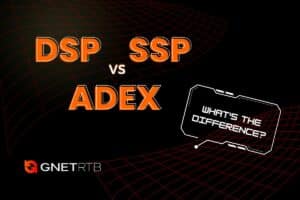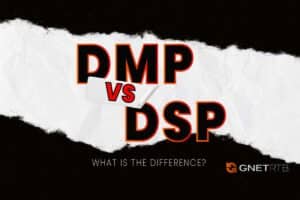Supply Side Platform (SSP) changed, in a good manner, the way we monetize websites and applications. Nowadays, it is impossible to imagine the programmatic ecosystem without this technology, which is fundamental for RTB to work.
That’s why we prepared this article, where you will understand what SSPs are, how they work, the advantages and how they can contribute to your online business.
What is an Supply Side Platform?
A SSP is a programmatic software that publisher’s use in order to monetize their website traffic, app’s, games or any other online content.
This technology is fundamental in the programmatic ecosystem for its capacity to connect itself to other technologies such as DSPs, ad exchanges, ad networks and data-management platforms DMPs.
Finally, an SSP simultaneously connects the publisher’s ad inventory to multiple programmatic buyers who compete for ad space through bidding. Therefore, an SSP allows sellers and publishers to optimize income and carry out a safe and effective management of their media space, helping buyers and brands to achieve their marketing strategies objectives.
How important are Supply Side Platforms to publishers?
A SSP is a critical component for publishers. Without an SSP, you can’t sell ad space programmatically.
Although it is possible to sell ad inventory using ad networks and through direct selling, SSPs offer a greater level of ad inventory control, including selling the remaining inventory.
It is important to note that even some offers thar are classified as “Programmatic Direct” requires the use of an SSP to run ads in accordance with the terms of the offer.
How does an Supply Side Platform works?
SSPs has as intention to maximize digital media revenue by leveraging ad inventory’s potential. They connect publishers and app’s developers to multiple demand sources simultaneously through tags, while mobile uses the SDK to identify viewers in the app environment.
SSPs provides technology and the resources that allow publishers to gather, consolidate, and manage publisher’s demand sources, but the publishers themselves who establish brand safety guidelines, categories, and pricing.

A SSP can sell a publisher’s ad inventory in many ways. Perhaps the most common is via direct offers from DSPs via RTB.
To simplify the auction process description, when a publisher uses an SSP, each time the website or application content is loaded, the SSP sends a request to the ecosystem of technologies connected to it. For RTB media purchases, multiple DSPs can bid on print.
A user profile and ad inventory are subsequently delivered, and the software verifies that the offer matches the parameters of the target groups indicated and desired by the advertiser. The SSP aggregates all bids, determines which is the highest bid, and broadcasts the ad.
Processes performed by SSP when an advertisement sale is happening
To connect to the programmatic ecosystem, every publisher needs an SSP, which is important in order to sell their ad inventory. Besides selling inventory, a SSP helps the publisher to manage programmatic ad-buying.
SSPs automatically solves several processes related to different ad buying and sales methods. Using advanced algorithms, the main tasks of a SSP are:
- Create programmatic guaranteed offers, preferred deal and other specific deals such as RTB;
- Optimization of the publisher’s different ad network partners;
- Manage frequency capping, which refers to the number of times a specific viewer is exposed to a specific ad;
- Making sure that only relevant ad networks are considered in the processes;
- Manage latency and other ad network inconsistencies;
- Offers bidding configuration options, such as minimum prices and more.
Supply Side Platforms Components
Back-end infrastructure: technical services and processes that are necessary to perform SSP’s roles and functions.
Ad exchange: DSPs connect themselves directly to SSP in order to initiate ad inventory auctions.
Trackers: collect and store the publisher’s website information in a database, looking forward to help form profiles of what type of viewers are normally visiting.
User profile database: tracks, shares and cross information’s with DSPs about specific users, such as the ads they saw and how they interacted with certain ads to create more accurate user profiles.
Integrations: SSP is integrated with others ad technology components to maximize bids and revenue.
Supply Side Platforms Resources
User’s interface: through the dashboard you can manage campaigns, review reports, handle billing and access other SSP features.
Analysis and reports: once data has been already collected and stored in the database, the publisher can create reports with the ad inventory performance metrics and perform their analysis.
Header Bidding: allows to manage multiple header bidding wrappers and demand partners.
Maximizing performance: helps maximize revenue and fill rate by introducing floor prices and managing auction mechanisms.
Ad inventory and campaign management: allows the management of different types of ad inventory, whitelist and blacklist advertisers, to define categories and block certain types of ads.
How Supply Side Platforms can help publishers
The benefits of an SSP go beyond functionality and resources, since the software is capable of:
- Sell ad inventory in an automated way, including display, video, native ads, on desktop and mobile;
- Produce detailed reports on who is bidding and how much ad inventory is being purchased;
- Gather several networks aiming on increasing competition for ad inventory, allowing more programmatic buyers to participate in the RTB process, helping the publisher to achieve better income;
- Simplicity and transparency when integrating the website into the SSP and providing all the necessary data for the publisher to analyze performance;
- Brand safety blocking unwanted ads, allowing the publisher to setup ad inventory offer only for specific programmatic buyers or channels;
- Optimize revenue, through price floor, when allowing publishers to offer ad inventory to more programmatic buyers and have better price control. Furthermore, one of the main SSPs advantages is the dynamic floor price, which combines soft and hard price floors, essentially converting the auction into a hybrid between first- and second-price auctions.

Advantages of using an Supply Side Platform
RTB turns possible that advertisers who need to escalate their products and services to find the ideal website to reach the right audience at the right time.
This working principle allows advertisers to buy spaces and digital impressions that provide better results and the possibility to decide where the ads are going to be exhibited. For publishers, the advantages of using an SSP are listed below:
- More offer and demand;
- More options to reach a bigger number of programmatic buyers;
- Allows to get to know other brands and companies, which may not be interested in contracting the ad space, but may be interested in making commercial agreements for future occasions;
- It is not necessary to have a contract;
- The information exchange between companies is constant and everyone benefits from having data that can be used to improve operations;
- Price is set in a fair clear way;
- Platforms are increasingly offering services related to offer and demand, incorporating analytical services to facilitate monitoring campaigns through basic metrics;
- Information is always available to companies that offer’s the space, as it is to the companies that request it. These information’s promote insights for future content creation, increasing the benefit of both parties.
SSP vs DSP

The main difference between a DSP and a SSP is that they plug into different boundaries of the programmatic ecosystem. While a DSP is the software that advertisers use to organize the action of buying ads, publishers make use of SSPs to automate the sale of ad space.
The two platforms have distinct functionalities, but they need to be connected in order to the RTB mechanism works.
Conclusion
In short words, SSP is a fundamental software for operations done by publishers and other creators that wish to maximize their digital media revenue.
This technology offers a programmatical way of gathering a greater set of ecosystem platform’s, helping you to manage the brand safety, fill rate, price floors and making decisions through the reports that you can generate.
If you want to try programmatic advertising and see its effectiveness, or want to meet a new SSP partner with their own ad exchange technology, GnetRTB may be the best place for you! Access this link and be attended by our expert team.




